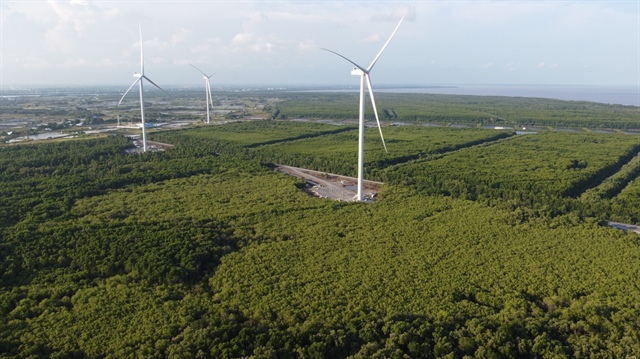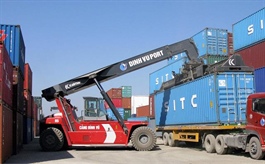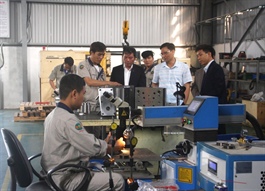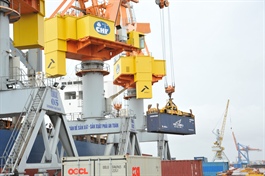Energy transition underway to cut emissions
Energy transition underway to cut emissions
Vietnam is making efforts to transition from fossil energy to clean, renewable energy in order to promote sustainable economic restructuring.
Reducing coal-fired power
According to experts, for a developing country like Vietnam, in addition to reducing greenhouse gas emissions, energy transition is an opportunity to promote economic restructuring towards sustainability.
Hoang Tien Dung, Director of the Electricity and Renewable Energy Authority at the Ministry of Industry and Trade (MoIT), said Vietnam is taking its first steps in the transition process from traditional energy to green, clean and renewable energy. However, the emergence of new electricity sources has also exposed the system to sustainability and stability challenges, which require coordination in terms of both policy and technology to ensure trustworthy power supply.

Developing renewable energy projects |
Currently, coal-fired power still accounts up to one-third of total output. Plans call for reducing the proportion of this type of electricity to about 9.5 percent and raising the share of renewable energy to 32 percent by 2045. Vietnam is also encouraging low-carbon power sources to cut down emissions and support renewable energy.
In the recently updated Power Plan VIII, the MoIT has integrated Vietnam’s commitments by eliminating new coal-fired power plants after 2030. The new installed capacity target for coal power from now to 2030 will drop to about 12 GW.
Public transportation transition
According to Bui Duy Thanh, the principle energy economist of the Asian Development Bank, in order to achieve the goal of net zero emissions by 2050, it is very important to start reducing emissions sharply from 2030. Wind and solar power should become the major source of electricity generation, accounting for more than 50 percent of electricity production by the middle of this century. For coal-fired power, the solution is to convert from coal to biomass, burn it with ammonia and proceed to decommissioning. Natural gas power and LNG will be converted to hydrogen fuel, Thanh said.

It is necessary to find solutions for switching from coal to biomass power |
The power sector will need to invest in grid technology innovation to meet the higher proportion of renewable energy. In addition, electricity storage systems need to be integrated into the grid system in order to reduce greenhouse gas emissions, while maintaining electricity supplies at a reasonable price.
In 2020, Vietnam emitted approximately 332 million tonnes of CO2 equivalent of greenhouse gases, with the electricity industry accounting for nearly half, about 162 million tonnes, and transport accounting for about 53 million tonnes (16 percent). These are the two main sectors that will participate in the energy transition. Therefore, from now to 2030, the transport sector with the support of technology, policies and resources will accelerate the transition from gasoline and diesel to using electricity, green energy and improve energy efficiency. By 2030, the sector will rationally develop means of transport and convert all vehicles and equipment to electricity and green energy.
Many localities in Vietnam are also making efforts to participate in the energy transition process. For example, the cities of Ho Chi Minh, Da Nang and Can Tho are targeting the transition of all buses and taxis to electricity and green energy, while Hanoi aims to transition about 50 percent of its public transportation.























